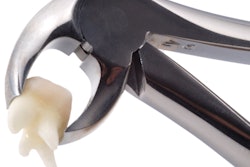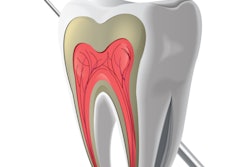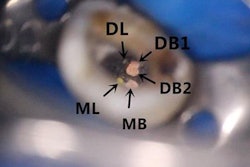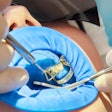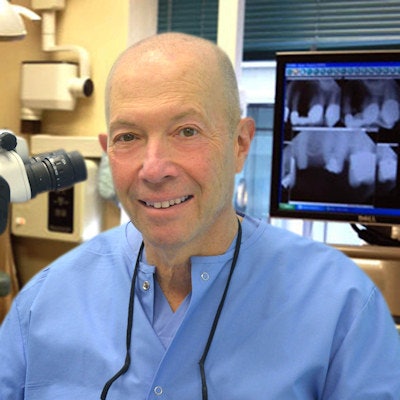
Endodontic procedures don't have to be worrisome. They can not only be rewarding but also become a profit center to build your practice. This article will hopefully navigate you around the possible pitfalls of root canal treatments and place you on the road to success.
Anatomy and case selection
For the general dentist, case selection is one of the most important factors in success. Don't try and tackle a severely curved maxillary molar until you are comfortable with your skills and techniques. In most cases, you will most likely see a vast difference in a 2D radiograph versus a 3D image. In recent years, cone-beam CT (CBCT) has made case selection and the choice of when to refer to an endodontist much easier. A recent survey stated that 28% of dentists now use a CBCT.1 This newer technology lets the general dentist know exactly what they are getting into before starting a procedure and aids in the "when to refer" process. The Root Canal Anatomy Project is a great site to see just how different anatomy is in 3D.
Endodontic access
Calcifications
Calcified roots can not only make the instrumentation process a lot harder but also lead to perforation complications. During typical endo access with a No. 4 round bur, you can feel the bur "drop" into the pulp chamber after it passes through the harder coronal dentin.
 Figure 1: Calcified mandibular molar. All images courtesy of Dr. Allan Deutsch.
Figure 1: Calcified mandibular molar. All images courtesy of Dr. Allan Deutsch.When the pulp chamber becomes calcified, the diameter of the round bur may be larger than the pulp chamber (figure 1). This results in the clinician not feeling a difference in cutting surfaces during access. The first "drop" they may feel is the bur dropping out of the tooth and into the furcation. To alleviate this, I published a study in the Journal of Endodontics which showed that, no matter the length of the root, the mean distance from the cusp tip to the pulp chamber ceiling is just under 7 mm (mandibular molars = 6.36 mm, maxillary molars = 6.24 mm).2 Now that we know safe access should stop at 7 mm, we can develop a technique to avoid perforations into the furcation. The point on the shank of a round bur which changes from parallel to tapered is coincidently 7 mm from the tip of the bur (figure 2). Therefore, we can use the 7-mm mark as a depth gauge to more easily find the canals and avoid perforations into the furcation.
 Figure 2: 7-mm mark on a surgical length round bur.
Figure 2: 7-mm mark on a surgical length round bur.Finding canals
As simple as this point may be, you must see the canal opening. Proper lighting and magnification, via loupes or a microscope, are key. An additional road map to finding canals, apart from a CBCT, is the color of dentin (figure 3). Following the darker line of dentin on the floor of the pulp chamber will lead you to a canal orifice.
 Figure 3: Note the darker shades of dentin on the floor of the pulp chamber.
Figure 3: Note the darker shades of dentin on the floor of the pulp chamber.Irrigation
After proper endodontic access and finding the canals, endodontic irrigation plays the second part in the successful root canal process. Irrigation serves many important functions, including the reduction of friction between the instrument and dentin, improved cutting effectiveness, dissolving tissue, instrument and tooth cooling, and, finally, as an antimicrobial.
Sodium hypochlorite is the main irrigating solution used to dissolve organic matter and kill bacteria effectively. However, sodium hypochlorite alone cannot eliminate bacteria.3 It is important to implement additional irrigation as it will improve the results of your endodontics. Ethylenediaminetetraacetic acid (EDTA) is beneficial in the removal of the smear layer and opening the dentinal tubules while chlorhexidine gluconate (2% CHX) has been proved to reduce Enterococcus faecalis biofilms. More recently, a product that successfully combines these two materials (Irritrol, Essential Dental Systems) has been proved not only to open the dentin tubules with less erosion than EDTA but also to disinfect against E. faecalis better than 2% CHX alone.4
Instrumentation
General practitioners often share their worries about instrument separation due to instrument designs. When choosing an endodontic instrument, you don't want a design that is too aggressive. The flute pattern should be more vertical rather than horizontal. This enables the instrument to shave the dentin rather than overengage it, which can lead to binding and instrument separation. I use the SafeSiders HF system (Essential Dental Systems), which further reduces instrument engagement by the creation of a patented relieved, reverse helical flat. This relieved helical flat rotates in the opposite direction of the cutting flutes to create an instrument that is very flexible and highly resistant to breakage. It provides me with easier and more effective negotiation of the canals.
References
- Mazda J. Trends in dentistry 2020. Inside Dentistry. 2020;16(12). https://www.aegisdentalnetwork.com/id/2020/12/trends-in-dentistry-2020. Accessed January 8, 2021.
- Deutsch AS, Musikant BL. Morphological measurements of anatomic landmarks in human maxillary and mandibular molar pulp chambers. J Endod. 2004;30(6):388-390. doi:10.1097/00004770-200406000-00003.
- Wong DT, Cheung GS. Extension of bactericidal effect of sodium hypochlorite into dentinal tubules. J Endod. 2014;40(6):825-829. doi:10.1016/j.joen.2013.09.045.
- Guzman J, Wan J, Deutsch AS, Musikant BL. Antimicrobial effectiveness of two endodontic irrigants on Enterococcus faecalis. Poster presented at: International Association for Dental Research conference; March 14, 2015; Boston, MA.
Dr. Allan Deutsch is an endodontist and holds 19 patents for co-inventing endodontic products for Essential Dental Systems. He is one of the leading authorities in endodontics, having lectured in more than 175 worldwide locations, and has co-authored more than 200 dental articles. He can be reached via email at [email protected].
The comments and observations expressed herein do not necessarily reflect the opinions of DrBicuspid.com, nor should they be construed as an endorsement or admonishment of any particular idea, vendor, or organization.




